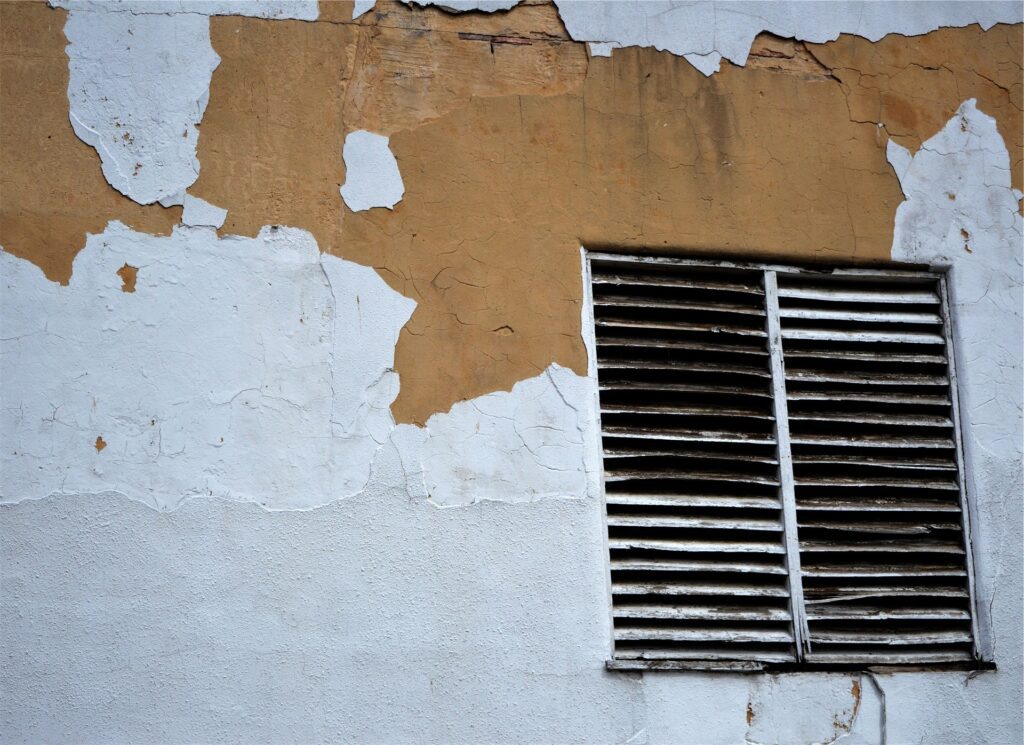Mould is everywhere. It’s in the air we breathe, and it’s on most of the surfaces we touch daily. While for the most part, it is typically harmless, some strains can be dangerous to health and well-being. This is made even more so when there is hidden mould which is not obvious but which is still exerting its harmful effects. Read on to learn more about the dangers of hidden mould to protect yourself and your loved ones.

Hidden mould can refer to any type of mould that is out of sight. This can include mould growing behind wallpaper, under carpeting, items in storage or any other hidden area.
It is often the result of water damage, as mould needs moisture to grow. Once hidden mould has started to grow, it can quickly spread through the home, causing structural damage and causing or worsening health problems, including respiratory difficulties, headaches, and fatigue. In addition, concealed fungal growth can worsen allergies and asthma symptoms.
As stated by the name, it can be difficult to spot, but there are a few signs to look for, such as:
- musty odours
- damp peeling paint or wall-paper
- unexplained health problems.
This version of mould grows out of sight, often in obscure areas like basements, attics or behind paint/wallpaper, under carpets or boarded walls. Because it can be difficult to spot, it can often go undetected for a long period.
What are the risks associated with unseen mould?
Hidden mould can pose a serious threat to both health and structures.
The danger lies in the fact that because this mould growth is often not visible to the naked eye, it is difficult to recognise, and confirm its location and manage it.
Left unchecked, it can cause serious respiratory problems, trigger allergies, and even lead to the accumulation of toxic black mould.
In addition, it can weaken the structural integrity of buildings, leading to serious damage over time.
As a result, it is important to be aware of the risks hidden mould poses and take steps to prevent its growth and proactively check for it.
As it is most often found in areas with high humidity levels (which includes areas where moisture-rich air gets trapped), it is important to keep indoor spaces well-ventilated. In addition, hidden mould thrives on organic materials, so it is important to remove any potential food sources for the spores- e.g. damp clothes and food. By taking these simple precautions, you can help to prevent the development of a hidden danger.
Where does it lurk?
It is important to be on the lookout for hidden mould, as it can quickly spread throughout a building if left unchecked.
Here are some common places where where it might be hiding:
Behind plasterboard:
Mould can grow on the paper backing of the plasterboard, especially if the wall has been exposed to water. Be sure to inspect walls carefully for any signs of mould growth, such as discolouration or a musty smell.
Under carpets:
Carpets can act as nets for mould spores, trapping them in the fibres and preventing them from spreading as fast. However, this also makes it easy for hidden mould to go undetected. Where the carpet has got damp, it can soon become a seedbed for these spores to develop – they will have the moisture, air and food (from the carpet) to stimulate their growth.
In HVAC (heating, ventilation and air conditioning) systems:
To prevent the growth of mould, HVAC systems should be kept clean and free of moisture. However, hidden moulds can still grow in these systems if they are not properly checked and maintained. Be sure to have your HVAC system inspected regularly by a professional to ensure that it is not harbouring hidden mould

While hidden mould can be difficult to detect, it is important to be on the lookout for any signs of its growth or for where it might be hiding. If you suspect that it may be present in your home or workplace, be sure to have the area inspected by a professional as soon as possible.
Hidden mould can be a tricky problem to identify and solve.
Here are a few ways to help you find hidden mould in your day-to-day environments:
1. Check for signs of water damage.
Mould often thrives in damp, humid conditions. If you notice any water stains, warping, or peeling paint/wallpaper, it could be a sign that hidden mould is present.
2. Inspect areas that are rarely used or difficult to access.
Mould can often be found in dark, cramped spaces that don’t get much air circulation. Be sure to check behind furniture, in closets, under sinks, box rooms filled with storage items etc
3. Pay attention to the presence and development of musty smells.
Mould often gives off a distinct musty smell. If you notice this kind of odour in any room of your house, it should raise your suspicion about possible mould growth.
4. Look for small black or brown spots on walls or ceilings.
Mould can sometimes be visible as small black or brown spots on surfaces like walls and ceilings. If you notice any spots that seem out of place, it’s worth further investigation.
5. Be aware of health symptoms that could indicate mould exposure.
Mould can cause a range of respiratory problems, from mild to severe, including coughing, sneezing, and difficulty breathing. If you suddenly start experiencing any of these symptoms, consider whether mould could be the culprit or an aggravating factor.
If you suspect that hidden mould is present in your home, it’s important to take action. Left unchecked, hidden mould can cause serious damage to your property and pose a serious health risk to you and your family.
To remove hidden mould, it is important to identify the source of the moisture and to repair any leaks or the effects of flooding.
The area should then be thoroughly cleaned with a mould-killing solution while wearing effective safety equipment. The extent and severity of the problem and its impact on you and other residents can help you decide whether it is feasible and safe for you to tackle it yourself or whether it would be safer to access professional help.
As hidden mould can be difficult to remove, it will be important to follow up with regular checking and maintenance to prevent it from returning.
Limiting its spread and growth
Mould is a type of fungi that can grow indoors in damp, dark environments. When hidden it is not always visible, but it can cause serious problems if left unchecked.
Some ways of limiting its spread and growth include:
- Keep indoor humidity levels low by ventilating bathrooms and kitchens in particular after cooking or showering, as well as the home in general. You may also consider the use of a dehumidifier to reduce and maintain a healthier humidity level.
- Address any leaks in the plumbing or roof and dry wet areas immediately.
- Clean surfaces like countertops and floors with solutions of bleach or vinegar.
- Store belongings in airtight containers or plastic bags to prevent moisture buildup.
- Limit the accumulation of damp clothing, shoes, and sports or hiking gear.

Make everyone in your home or work environment aware so that they can all become part of the mould prevention team.
By taking these precautions, you can help to prevent hidden mould from becoming a problem in your home.
1. Inspect your home regularly for any signs of mould growth. Establish a routine of checking for any signs of mould in areas of the home that may be vulnerable to its taking hold, despite all your efforts e.g. corners of attics, basement, backs of wardrobes/cupboards especially those against exterior walls etc.
2. Keep humidity levels between 30- 50% to discourage mould growth.
3. Repair any water leaks immediately to prevent moisture build-up.
4. Identify and apply a ventilation routine in your home to let moist air from the bathrooms and kitchen regularly and actively escape.
5. Use a good air purifier system to reduce the concentration of airborne mould spores from the indoor environment.
Mould can become a serious problem, whether at home or work. If you think you might have a mould issue, aim to get it sorted out as soon as possible.
The health risks posed by mould are too great to ignore, and the potential for damage to your property is also significant. Don’t ignore or underplay the potential risks of hidden mould – it could cause serious health problems for you and your family.
With that in mind, do not delay in addressing any concerns you have about hidden mould – the sooner you take action, the better.
The problem of hidden mould – it can exert its harmful effects on you, your loved ones, pets and buildings especially if you can’t see it’s there – so shine a light on the problem!